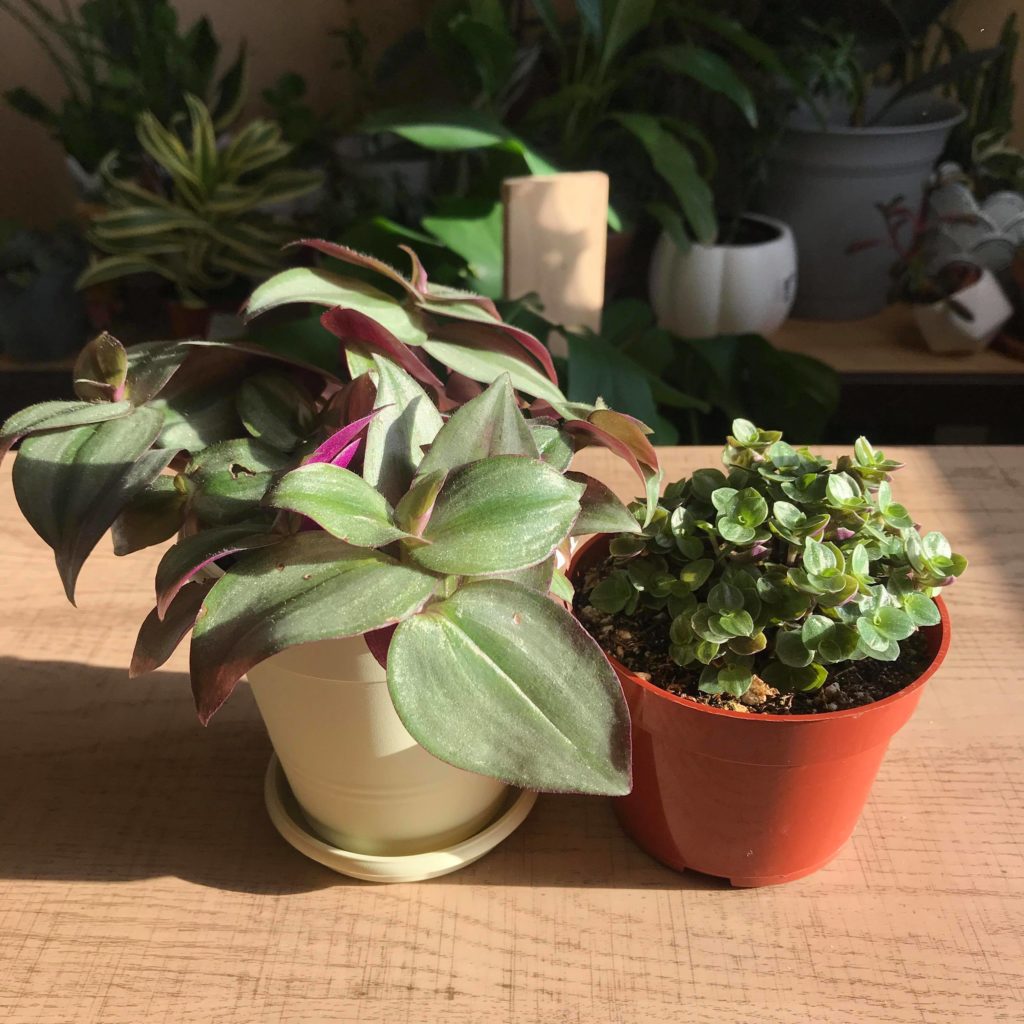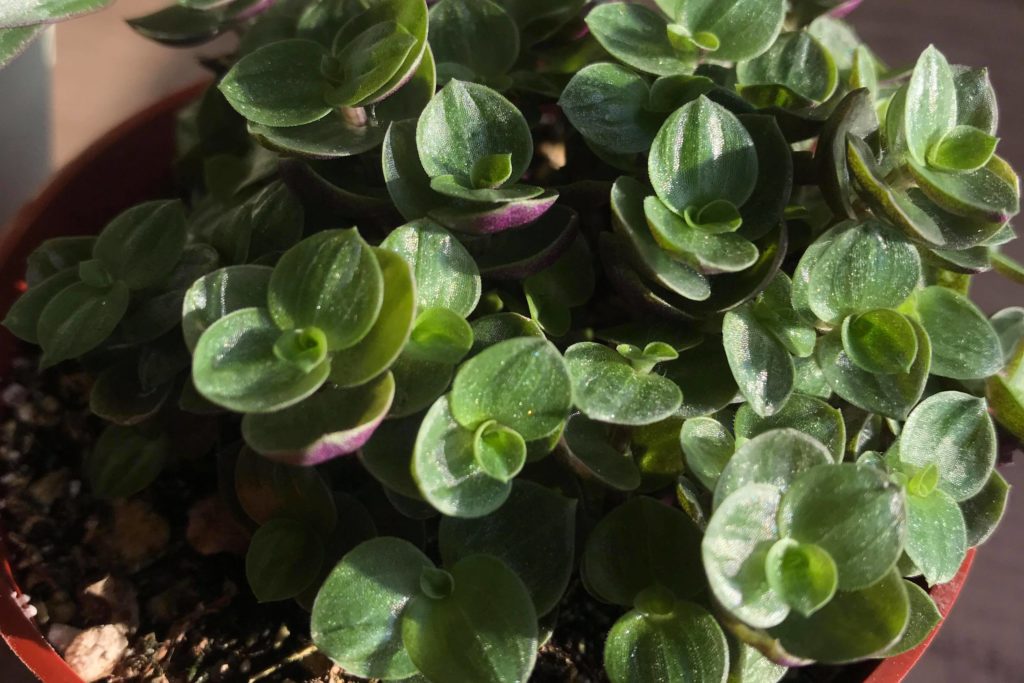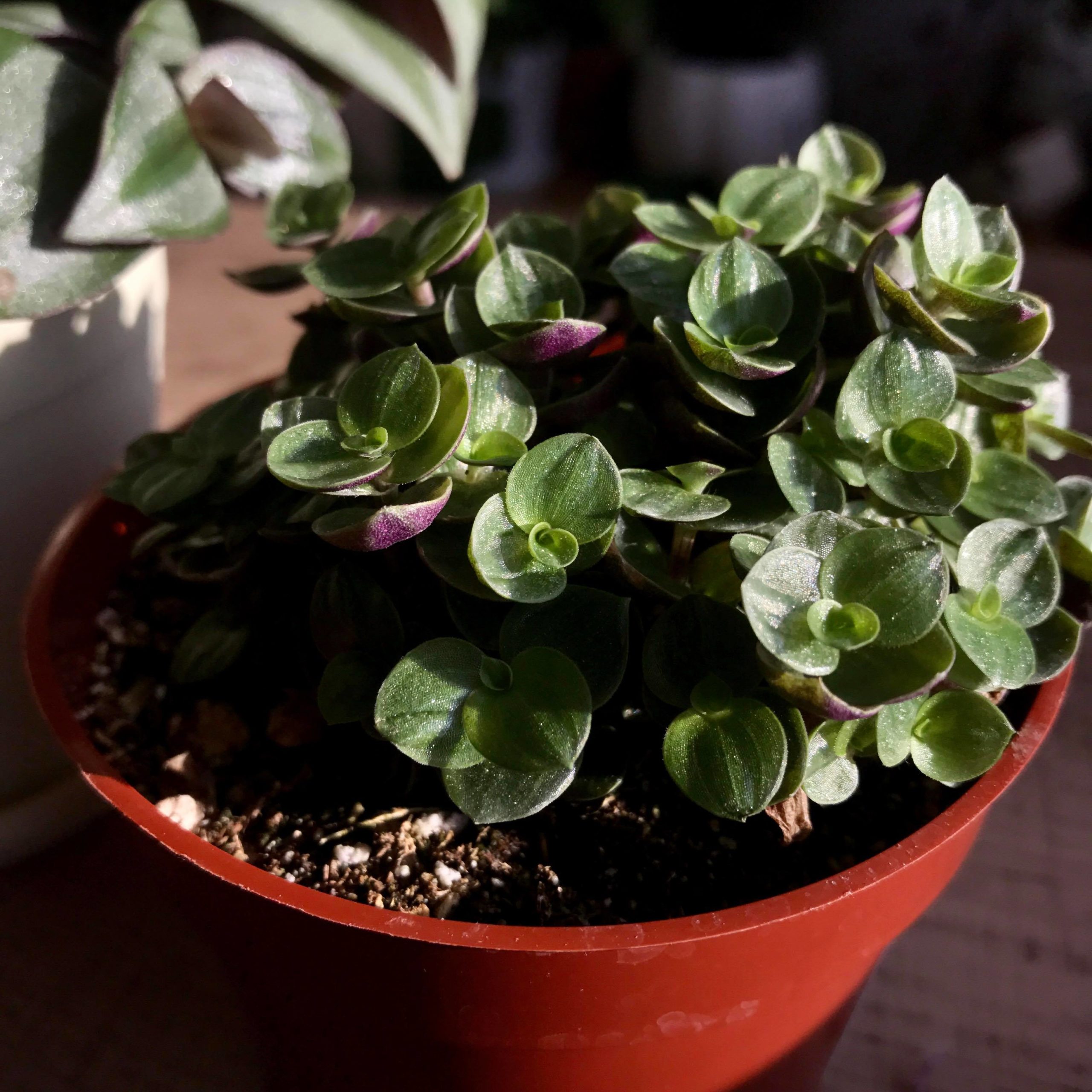Do you ever swing by your local garden center deliberately seeking out plants? Most of the time, I find myself wandering and looking for that next thrill. I’m not much of a rare plant collector, but I do love a relatively obscure-looking plant that I can snag for a deal. One of my latest finds is this beautiful, shimmery callisia repens, aka the turtle vine or inch plant. It’s a dead ringer for my new tradescantia zebrina and nanouk plants, and it only cost me $7 at my local nursery! I’ve only had it for a week, but it hasn’t been fussy whatsoever. To be a good plant parent, I dug up some information that I’ve found helpful and think that you’ll find useful as well!

How to identify the callisia repens
So, is callisia the same as tradescantia? They’re different genera, but they’re similar enough. Using my trusty Reader’s Digest Success With House Plants reference book, I learned that callisias are related to tradescantias — they’re both in the Commelinaceae family and are generally considered spiderwort plants. The callisia repens features low-growing waxy leaves with a faint shimmer — some varieties will even have splashes of pink and purple!
The underside of this particular turtle vine is a deep purple shade, just like the tradescantia zebrina plant. The obvious difference between the callisia and the tradescantia is the size — tradescantia plants are slightly bigger. In the spring, the callisia repens will sometimes produce small, white blooms. Because of its texture and fast growth, it makes for a beautiful hanging basket plant!

How to care for the callisia repens
How do you care for callisia repens? The care requirements are similar to those of succulent plants. Hardy to zones 10a to 11b, callisia repens does well in warm temperature and bright indirect light. You don’t want to overwater them — my plan of action, for now, is to bottom water. When you water your callisia repens in the growing season, add diluted liquid fertilizer every two weeks or so. While you should go easy with the watering, this plant does appreciate humidity — the callisia repens is native to tropical and warm regions in South America. As with succulents, you can cut a vine of leaves off, callous it, and leave it in some soil to propagate a callisia repens plant. Just a note of caution: You’ll want to keep the callisia repens away from your cats and dogs because it’s known to cause allergic reactions!
I’m stoked to see how this callisia repens grows over time. From my research and one week of experience, it doesn’t seem like a high maintenance plant at all, and the foliage is absolutely lovely for the price. Fingers crossed that this baby can remain accessible and affordable!
